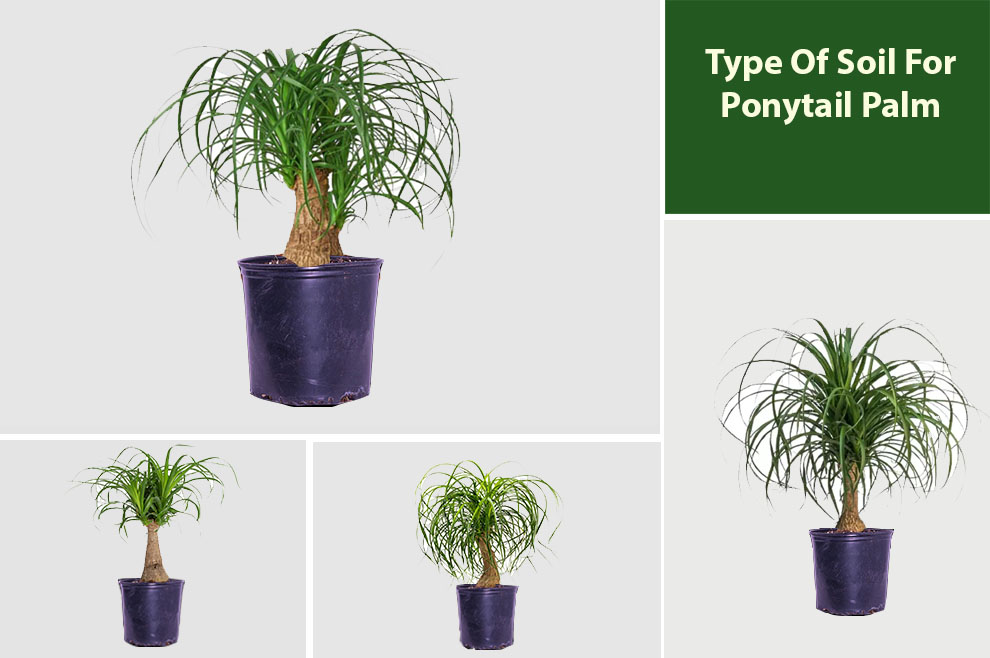Best Ponytail Palm Soil Mix for Potting These Beauties
A cactus or succulent mix with added perlite for good drainage is ideal for ponytail palm growth. You may choose from DIY or store-bought mix.

The ponytail palm (Beaucarnea recurvata) is a captivating plant known for its unique appearance and easy-care nature.
Whether you’re a seasoned plant enthusiast or just beginning your gardening journey, understanding the right soil for your ponytail palm is crucial to its overall health and growth.
In this article, we will explore the key considerations for selecting the best soil for ponytail palm growing both indoors and outdoors.
Understanding the Ponytail Palm
Before delving into soil specifics, let’s take a moment to get acquainted with the ponytail palm.
Despite its name, the ponytail palm variety is not a true palm but belongs to the Agave family. Native to arid regions of Mexico, this plant has evolved to thrive in environments with minimal water availability.
Its distinctive appearance, characterized by a stout trunk and a tuft of long, arching leaves resembling a ponytail, makes it a popular choice for both indoor and outdoor landscaping.
Ponytail Palm Soil Mix Key Requirements
The success of your ponytail palm largely hinges on providing it with the right soil conditions.
These plants thrive when their roots are allowed to breathe, and the soil drains well. As such, the primary consideration for choosing soil for your ponytail palm is ensuring optimal drainage.
Avoid soils that retain excess moisture, as prolonged dampness can lead to root rot and other issues.
The ideal soil should strike a balance between retaining enough moisture to sustain the plant and allowing excess water to escape.
This is especially important if you’re considering planting your ponytail palm outdoors, where rainwater can accumulate more readily.
Don’t miss out this detailed care guide for ponytail palms.
Components Of The Ideal Ponytail Palm Potting Mix
Creating the perfect soil mix for your ponytail palm is not as daunting as it may seem. A blend that replicates its native habitat will yield the best results.
A suitable mixture combines a specialized succulent or cactus mix with perlite to enhance drainage.
1. Succulent/Cactus Mix
This specialized mix is designed to provide excellent drainage while still retaining some moisture.
It typically consists of a blend of materials like sand, peat moss, and coconut coir. These components ensure that water moves through the soil easily, preventing the risk of waterlogged roots.
2. Perlite
Adding perlite to the soil mix further improves drainage and aeration. Perlite is a lightweight volcanic mineral that increases soil porosity and prevents compaction.
Its presence creates air pockets within the soil, allowing the roots to breathe and minimizing the chances of waterlogging.
DIY Ponytail Palm Soil Mix Recipe
Creating your own soil mix for ponytail palm is a straightforward process that empowers you to tailor the soil to your plant’s specific needs. Here’s a simple recipe to get you started:
- Mix 2 parts succulent/cactus mix with 1 part perlite.
- Thoroughly blend the components to ensure even distribution.
- Transplant your ponytail palm into this mix, ensuring the top of the root ball sits slightly below the soil surface.
This DIY mix strikes the perfect balance between moisture retention and drainage, providing your plant with the optimal environment for growth.
Commercial Ponytail Palm Soil Type
For those who prefer convenience or lack the time to create a custom soil mix, numerous pre-packaged soil blends are available on the market.
Look for products specifically labeled for succulents or cacti, as these will closely match the requirements of your ponytail palm.
Reputable brands such as Espoma, Miracle-Gro, and Black Gold offer a range of suitable soil options that cater to various plant care preferences.
Ponytail Palm Planting and Care Tips
Transplanting your ponytail palm into its new soil mix is a critical step in ensuring its well-being. Follow these planting and care tips for the best results:
Repotting: If your ponytail palm has outgrown its current container or shows signs of root binding, it’s time to repot. Choose a pot that allows for at least an inch of space around the root ball.
Planting Depth: When transplanting, position the ponytail palm so that the top of the root ball is slightly below the soil surface. This prevents water from pooling around the base of the plant.
Watering: Ponytail palms are drought-tolerant, so it’s important not to overwater. Allow the soil to dry out between waterings, and always check the moisture level at the root level before adding more water.
Troubleshooting Soil Issues with Ponytail Palms
Despite your best efforts, issues related to soil can still arise. Here are some common problems and their solutions:
Overwatering: If you notice yellowing or wilting leaves, your plant may be suffering from overwatering. Adjust your watering routine and allow the soil to dry out more thoroughly between waterings.
Compacted Soil: If the soil becomes compacted over time, it can hinder drainage and root growth. Gently aerate the soil using a fork or stick to create small holes for air and water to penetrate.
Poor Drainage: If water isn’t draining properly, consider adjusting your soil mix to include more perlite or adding small rocks at the bottom of the pot to create a drainage layer.
The type of soil for ponytail palm you select is an essential step toward creating an environment that supports ponytail palm’s growth rate and vitality.
By choosing a well-draining soil mix that mimics its native habitat, you’re giving your plant the best chance to thrive.
Whether you opt for a DIY mix or a commercial blend, remember that proper planting techniques and consistent care are equally crucial for the long-term health of your ponytail palm.
With the right soil foundation, you can enjoy the beauty and unique charm of this captivating plant in both indoor and outdoor settings.
